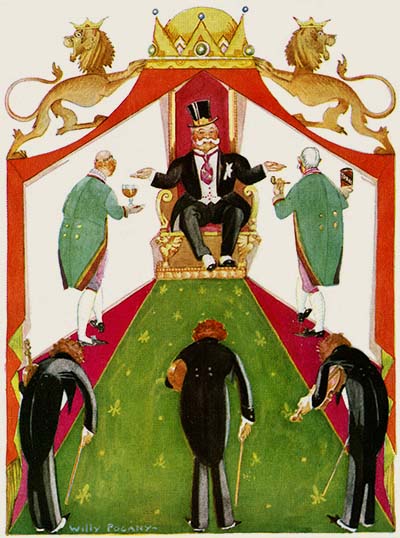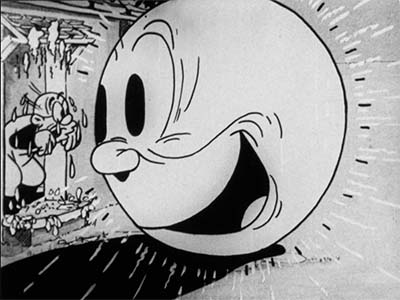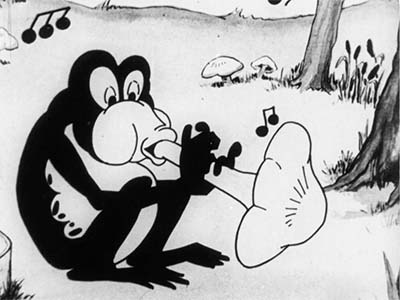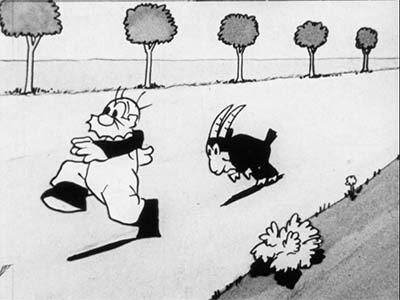People who aren’t members of Animation Resources don’t understand how comprehensive our Reference Packs are. Over the next couple of weeks, we will be posting what each section of our current RefPack looks like, starting today with the Featured section. If you are a member of Animation Resources, click on this post to go to the Members Only page. If you aren’t a member yet, today is the perfect time to join! Our current Reference Pack is one of our best yet, and General and Student Members get access to a special Bonus Archive with even more material from past Reference Packs.
What are you waiting for?![]()
JOIN TODAY!
https://animationresources.org/membership/levels/

Every other month, Animation Resources shares a new Reference Pack with its members. They consist of an e-book packed with high resolution scans and video downloads set up for still frame study. Make sure you download the Reference Pack before it’s updated. When it’s gone, it’s gone!
JOIN TODAY To Access Members Only Content
PDF E-BOOK
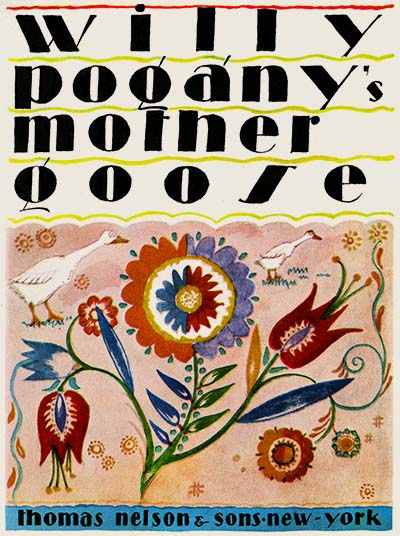
Willy Pogany’s Mother Goose
![]()
1928
Download this article

![]() Willy Pogany was born in Hungary in 1882, and studied at Budapest Technical University, as well as schools in Munich and Paris. He was unable to make much of an impact as an artist in Paris after two years of study and work, so he relocated to London, where there was a great demand for book illustrators. His first success was with The Welsh Fairy Book by T. Fischer Unwin, to which he contributed over 100 designs. For the next decade, he worked as an illustrator in London, producing over a dozen books, including his highly regarded editions of Faust, Norse Mythology, Tan-glewood Tales, The Rubaiyat of Omar Khayyam and collections of Hungarian and Turkish fairy tales.
Willy Pogany was born in Hungary in 1882, and studied at Budapest Technical University, as well as schools in Munich and Paris. He was unable to make much of an impact as an artist in Paris after two years of study and work, so he relocated to London, where there was a great demand for book illustrators. His first success was with The Welsh Fairy Book by T. Fischer Unwin, to which he contributed over 100 designs. For the next decade, he worked as an illustrator in London, producing over a dozen books, including his highly regarded editions of Faust, Norse Mythology, Tan-glewood Tales, The Rubaiyat of Omar Khayyam and collections of Hungarian and Turkish fairy tales.
Pogany is best known for his work on illustrated book adaptations of Richard Wagner’s operas, Lohengrin, Parsifal and Tannhauser, as well as a book of Coleridge’s The Rime of the Ancient Mariner. Unlike other book illustrators of the time, Pogany took an active part in the selection of papers and bookbinding of his books, framing his illustrations with calligraphic borders, hand lettering and using toned papers that set off the drawings.
In 1914, Pogany emigrated to the United States, where he started out illustrating covers for Harper’s Weekly, Ladies Home Journal and Town and Country. His fame as an illustrator of Wagner led to a position at the Metropolitan Opera in New York, where he designed scenery and costumes. In 1934, he went to work on movies in Hollywood designing sets in the Art Deco style for Busby Berkeleys Dames. At Walter Lantz’s animation studio, he designed a character named Peterkin Pan. Pogany was also a well known painter and muralist, doing commissions for celebrities like John Ringling, Douglas Fairbanks, William Randolph Hearst and Enrico Caruso, among others. In his retirement, he created three art instructional books on drawing, oil panting and watercolors. He died in New York in 1955.
In 1929, Pogany designed a book of Mother Goose rhymes for children. Heavily influenced by Art Deco, this edition is unique in several ways. Pogany didn’t utilize standard text blocks. All of the rhymes are hand lettered and laid out on the page in imaginative ways that accent the rhythms and illustrations. In contrast with his earlier work, the printing and binding is unremarkable; and his illustrations, while perfectly adequate, do not display the degree of flashy draftsmanship of his earlier work. His audience here wasn’t the same as for his books based on opera and classical mythology.
The focus of this book is design, and the appeal is directly targeted at very young children. The book is made to be read out loud by a parent to a child sitting on their lap. With the turn of each page, the design of the spread changes, providing visual interest for children too young to read the words. While most illustrations of Mother Goose stick to traditional medieval costumes and settings, Pogany skillfully adapts the themes to a contemporary context to make them more relatable to modern children.
The copy of this book that we digitized wasn’t perfect… a text block on one page is damaged too badly to be corrected digitally, and a couple of color separations are printed out of register. But the genius of the design still shines through.
One note on our download of this book… One of the nursery rhymes includes racial stereotyping that is clearly unacceptable to modern readers. We are providing two downloads: one with the pages included, and one with them omitted. You can choose the download that you prefer.
REFPACK049: Pogany’s Mother Goose (Without)
Adobe PDF File / 156 Pages / 485 MB Download
SD VIDEO:

Two Early Van Beuren Cartoons
![]()
Summer Time 1929 / The Office Boy 1930
Van Beuren cartoons are among the most misunderstood animated shorts from the golden age of animation. Armchair animation historians tend to have a certain set of criteria they judge by— either the polish and production values of Disney, or the carefully constructed gags of Tex Avery at Warner Bros and MGM. If you judge like that, Van Beuren cartoons fall far short, but that doesn’t mean that there’s nothing to learn from these films.
Let’s start by looking at Van Beuren cartoons the way animation historians who aren’t cartoonists look at them… The style of drawing varies from shot to shot. The movement of characters is rubbery and completely devoid of any attention to anatomy. There’s no attempt to render perspective or depth except in the most crude and basic way. Most of the action takes place in a flat plane from right to left. Characters are two-dimensional and sometimes downright grotesque. Scene cuts don’t build to a gag— most gags are completely contained within a single scene. The next scene sets up and plays out a totally new gag. The overall structure of the continuity is extremely basic. In fact, the story of the cartoon can be completely described in a single sentence… “The boss flirts with the girl until his wife finds out.” Or in the case of “Summer Time” even more simply, “Stuff happens with Farmer Al Falfa and a bunch of mice.” All of these criticisms are true, and all of them completely miss the point.
Cartoonists and animators can totally misunderstand the appeal of these cartoons too. It’s de rigueure nowadays for every TV cartoon show to do a "retro episode" where the characters are drawn in old timey 1930s rubber hose style. They use a soundtrack full of ukulele music, rinky-tink jazz and Raymond Scott’s Powerhouse, not for any particular purpose beyond simple nostalgia. They’ll paint backgrounds with farmyards or city streets from the depression and color the cartoon in shades of black and white. Yet the results are always the same… Even though the new old fashioned cartoons look and sound like the cartoons of the 1930s, they just don’t feel anything like them.
Why is this? The answer is simple. Van Beuren cartoons aren’t good because they are carefully crafted and constructed like a Disney or Tex Avery cartoon. And they aren’t good because they are in black and white and have peppy jazz music. They are good because they were created by artists who were having FUN.
In order to appreciate these cartoons, you have to look beneath the surface. Their appeal isn’t in their style, it’s in the creative freedom they express. The animation in these Tom & Jerry cartoons was handed out to the animators scene by scene. The artists were given a general idea of what was supposed to happen between the cuts, but if they thought of a way to make it funnier, they were free to go with that. They weren’t laying bricks to create a foundation for other people to build on, they were going all out to make their own fifty feet of film as funny as they possibly could.
When the time came to string all the animators’ work together, a cursory hookup was all that was needed to transition from one animator’s section to the next. They weren’t building a symphony, they were competing in a jam session. Every animator was encouraged to improvise, without worrying about continuity, consistency or production value. And this competition for laughs ended up producing films that were jam packed with funny surprises. It’s no wonder that a one-of-a-kind animator like Jim Tyer started out his career at Van Beuren, and it’s no wonder that Van Beuren was the only studio who fully recognized Tyer’s creative spark and allowed him to direct.
So when you are looking at these films, look past the surface nostalgia and focus at what is going on behind the scenes. Think about applying this kind of freedom to your own films. Imagine how much fun it would be to work on a project where the only requirement is to produce approximately five minutes of animation on a simple theme… where the animators weren’t required to conform to a specific model, but instead were encouraged to create the funniest action possible in their own style. Who wouldn’t want to work like that?!
Van Beuren wasn’t the "worst cartoon studio in the golden age" as some people have described it. It was one of the few studios that gave its artists absolute freedom. Many thanks to Animation Resources Advisory Board Member Steve Stanchfield for sharing these rare films with us.
MP4 Video File / SD / 7:22 / 195 MB Download
MP4 Video File / HD / 8:10 / 148 MB Download
Many thanks to Steve Stanchfield from Thunderbean Animation for sharing these rare films with us.
JOIN TODAY To Access Members Only Content
Haven’t Joined Yet?
Check out this SAMPLE REFERENCE PACK! It will give you a taste of what Animation Resources members get to download every other month!

CLICK TO DOWNLOAD A Sample RefPack!
Animation Resources is a 501(c)(3) non-profit arts organization dedicated to providing self study material to the worldwide animation community. Every month, we sponsor a program of interest to artists, and every other month, we share a book and up to an hour of rare animation with our members. If you are a creative person interested in the fields of animation, cartooning or illustration, you should be a member of Animation Resources!
It’s easy to join Animation Resources. Just click on this link and you can sign up right now online…
JOIN TODAY!
https://animationresources.org/membership/levels/
![]()
![]() Animation Resources depends on your contributions to support its projects. Even if you can’t afford to join our group right now, please click the button below to donate whatever you can afford using PayPal.
Animation Resources depends on your contributions to support its projects. Even if you can’t afford to join our group right now, please click the button below to donate whatever you can afford using PayPal.















